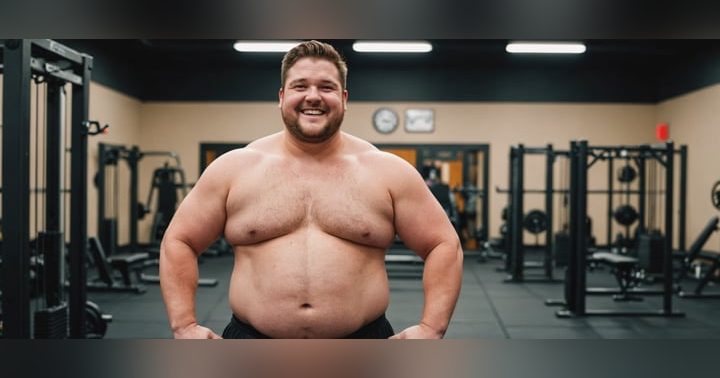Navigating Love with Attachment Styles: Building Healthier Relationships for Gay Men

Cue Needy by Ariana Grande
In recent years, the concept of attachment styles has gained increasing attention, particularly in conversations about relationships and emotional health. For many, including those in the LGBTQ+ community, understanding attachment styles has become a crucial tool for navigating the complexities of modern dating.
For gay men who often face additional challenges related to trust and vulnerability in relationships, attachment styles play an even more critical role. Understanding these patterns can help create healthier, more fulfilling connections and promote emotional well-being in the long term.
Understanding John Bowlby’s Attachment Theory
Attachment theory, first proposed by British psychiatrist and psychoanalyst John Bowlby in the late 1950s and 1960s, offers profound insights into how early relationships shape our ability to form emotional bonds throughout life. Bowlby defined attachment as a lasting psychological connectedness between human beings, believing that humans are born with an inherent need to form close emotional bonds with caregivers. He suggested that this bond typically develops during the first six months of a child’s life, provided the caregiver is responsive and nurturing.
Bowlby’s attachment system serves two key purposes. First, it protects individuals from potential threats or harm, and second, it helps regulate emotions following distressing events. While Bowlby’s model primarily focuses on the attachment between a parent and child, his findings laid the groundwork for understanding how attachments form throughout a lifetime, including in romantic relationships.
Evolving Attachment Theory: From Caregivers to Romance
In 1987, Cindy Hazan and Phillip Shaver expanded on Bowlby’s research, applying attachment theory to romantic relationships. By 1990, they identified four distinct attachment styles:
- Secure Attachment – Those with a secure attachment style are able to connect with others in relationships while maintaining a healthy level of independence. These individuals possess a positive view of themselves and others.
- Anxious-Preoccupied – Individuals with this style seek high levels of intimacy, approval, and responsiveness from their partners, often becoming overly dependent. They tend to have a negative self-image and a positive view of others. People with this style often worry about whether their partners will reciprocate their desire for intimacy. They are preoccupied with relationships and may feel unworthy of love, seeking constant approval from others.
- Dismissive-Avoidant – Those with this style prioritize independence and often avoid attachment altogether. They maintain a positive self-image but view others negatively. People with this style often avoid close relationships and downplay the importance of attachment. Their self-reliant nature and distrust of others make forming deep emotional connections difficult.
- Fearful-Avoidant – Individuals with this style desire emotional closeness but feel uncomfortable with it. They tend to have mixed feelings about relationships, possessing both a negative self-image and view of others. Those with this style often mistrust relationships, view themselves as unworthy of love, and experience emotional instability.
A grid developed by SimplyPsychology.org helps illustrate these attachment styles. It categorizes attachment styles based on levels of avoidance (positive or negative view of others) and anxiety (positive or negative view of self).
The Impact of Sexual Minority Stress on Attachment
While Bowlby’s original research focused on parent-child relationships, adult attachment styles are shaped by our experiences throughout life. For sexual minority men, attachment theory intersects with a unique set of challenges, including sexual identity development and social stress.
In 2016, a study published in Behavioral Medicine by Stephanie H. Cook and Benjamin J. Calebs examined the connection between attachment, sexual minority stress, and health outcomes for gay men. The study found that the stressors faced by sexual minority men—such as discrimination and rejection—could overwhelm their attachment systems and potentially alter their attachment styles.
For many LGBTQ+ individuals, the process of coming out and navigating relationships during adolescence is particularly stressful. This developmental period, which typically involves forming romantic relationships, is also when many gay individuals are coming to terms with their sexual identity. The stress of societal rejection and internalized homophobia can hinder the development of secure attachments, contributing to patterns of anxious, dismissive, or fearful attachment styles in adulthood.
For example, some gay men may have grown up closeted, forming inauthentic relationships with members of the opposite sex or avoiding romantic relationships altogether. These experiences could have stunted their emotional growth, leaving them unsure of how to form healthy, fulfilling connections.
The Cycle of Insecure Attachment and Emotional Baggage
Insecure attachment styles can perpetuate a cycle of hurt within the gay dating scene. Someone who starts with a secure attachment style may encounter emotionally unavailable partners, leading to repeated negative experiences. Over time, they may develop a more anxious or avoidant attachment style, as their self-worth diminishes and they begin to expect rejection.
This cycle is especially common in communities where societal acceptance and validation may be hard to come by. Gay men, in particular, often face additional layers of emotional stress related to their sexual identity, which can complicate their ability to form secure attachments. This cycle can also be passed on to others—someone who has been hurt in past relationships may unwittingly hurt others, perpetuating the cycle of mistrust and emotional detachment.
Breaking the Cycle: Finding Solutions
A 2010 study published in the American Journal of Men’s Health by Jac Brown and Robert Trevethan found that internalized homophobia and anxious or avoidant attachment styles were linked to higher levels of shame in gay men. Those who were not in relationships reported higher levels of shame and insecure attachment, suggesting that a lack of healthy emotional connections can exacerbate negative self-perceptions.
More recently, an August 2021 study in Sexuality Research and Social Policy found that securely attached gay men experienced higher levels of well-being and relationship satisfaction. In contrast, those with anxious or avoidant attachment styles reported lower well-being and poorer relationship outcomes.
Overcoming Anxious or Avoidant Attachment Styles: A Path to Healthier Relationships
Attachment styles play a critical role in how we navigate romantic relationships. For many, understanding their attachment style can illuminate why certain patterns, such as clinginess, avoidance, or anxiety, keep recurring. But if you have an anxious or avoidant attachment style, are you stuck with it forever? A 2020 study published in the European Journal of Personality suggests that change is possible.
A key takeaway from the study is the idea that, while we can't control the behaviors of others, we can influence our own responses. In relationships, it’s natural to want your partner to behave in certain ways—particularly if you have an anxious attachment style, where fears of abandonment and rejection might heighten these desires. But no matter how well we act in a relationship, we can’t prevent someone from lying or cheating. Instead, the real power lies in how we respond to such behaviors.
If someone betrays you, you have a choice: stay, confront them, or walk away. What’s critical is not holding onto the hurt and blaming yourself for someone else’s bad actions. Self-blame can spiral into believing you're unlovable or deserving of mistreatment, but it’s essential to remind yourself that sometimes people are just not right for us. As harsh as it might sound, sometimes the simplest conclusion is that a partner didn’t appreciate your worth—and that's on them, not you.
The aforementioned study also found something encouraging: people who actively wanted to decrease their attachment anxiety or avoidance were more successful in doing so than those who didn’t have the same desire for change. This suggests that by simply deciding to work on your attachment style, you’ve already taken a significant step toward improvement.
Practical Tips for Overcoming Anxious or Avoidant Attachment Styles
If you're interested in working on your attachment style, resources such as therapy, self-reflection, and mindfulness can be helpful. A notable article from BetterHelp outlines some steps you can take to overcome an anxious or avoidant attachment style:
- Seek Professional Help: Finding a therapist can provide an external perspective on your relationship patterns. A professional can guide you in understanding why you behave in certain ways and help you develop healthier patterns.
- Educate Yourself: Increasing your knowledge of attachment styles can offer insights into why you react a certain way in relationships. The more you understand, the easier it becomes to change maladaptive behaviors.
- Practice Self-Love: Addressing your own feelings of worthlessness or shame can make a huge difference. Learning to love yourself, and not depending on validation from others, is key to forming healthy attachments.
- Cultivate Mindfulness: Being mindful helps you stay present and not catastrophize potential issues. Instead of jumping to conclusions when your partner is late, for example, mindfulness encourages you to observe the situation without letting your anxieties take over.
These steps are particularly important for LGBTQ+ individuals, who may have faced unique challenges growing up. Internalized homophobia, shame, and trauma can all exacerbate anxious or avoidant attachment styles. By addressing these emotional wounds, you’ll be better equipped to approach relationships from a place of security.
Understanding Your Attachment Style
A critical piece of advice from both the BetterHelp article and research published by NPR is the value in simply understanding your attachment style. NPR cited research showing that knowing the four primary attachment styles (secure, anxious, avoidant, and fearful-avoidant) can positively influence your relationships. Being aware of these patterns allows you to approach love with more self-awareness.
To help with this, quizzes are available that can provide insight into your specific attachment style. For instance, NPR provided a 24-question quiz with statements like, "I fear that my partner will stop liking me if we spend time apart," and, "I fear my partner will cheat on me if they are away."
I recently took this quiz, fully expecting my results to align with my known anxious attachment style. Unsurprisingly, I scored 63% anxious, but I was pleasantly surprised to see a 38% secure score as well, indicating growth and progress. It was an encouraging reminder that we are not static; with work, we can shift toward healthier behaviors.
Moving Toward Security
While it’s possible to have multiple attachment traits (like being both anxious and secure), the goal for most people is to work towards a more secure attachment style. Secure individuals enjoy intimacy without anxiety or avoidant tendencies, effectively communicate their needs, and are emotionally responsive to their partner.
The BetterHelp article emphasizes that, while we can’t choose our attachment style, the good news is we’re not alone in addressing it. Open communication with our partners about attachment styles and triggers can foster healthier relationships. As we gain a deeper understanding of our own tendencies and emotional needs, we become better equipped to navigate relationships that are balanced and fulfilling.
The road to secure attachment is one of self-awareness, open communication, and continual growth. Additionally, healing from past traumas, especially those tied to homophobia and internalized shame, is vital in bringing your best self into any relationship. By putting in the work, you can not only overcome anxious or avoidant attachment styles but also set yourself on a path towards a secure, fulfilling love.
And remember. Every day is all we have, so you've got to make your own happiness.
For more information on this topic, listen to Episode 15. Understanding Attachment Styles.
Tune into your favorite podcast player every Tuesday for new episodes of A Jaded Gay.


















